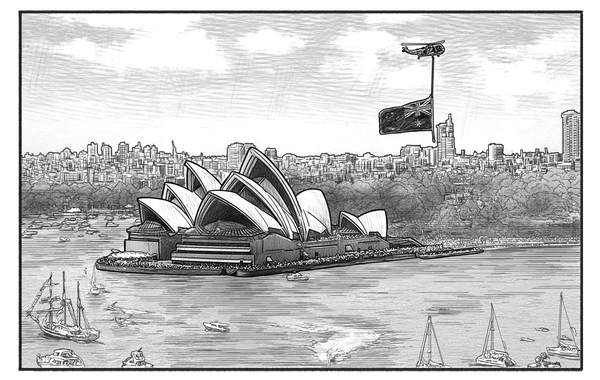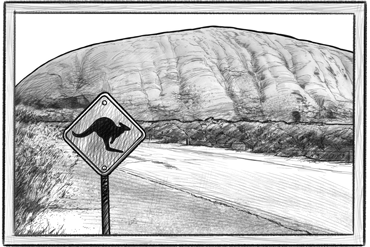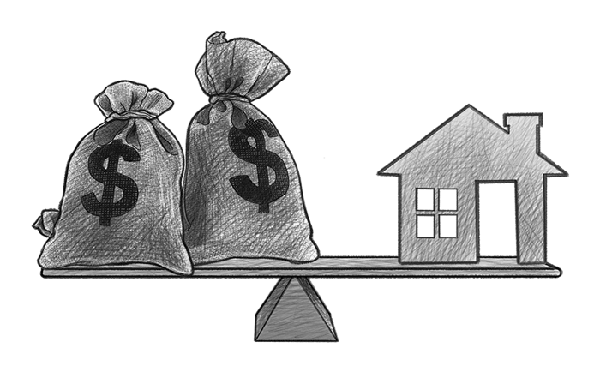The Richest People on Earth

Hi, The Investor’s Podcast Network Community!
Happy Saturday, folks!
On this day in 1950, the inaugural Formula One World Championship season roared to life 🏎️
After a fierce competition featuring six European Grand Prix races, and the Indianapolis 500, the checkered flag 🏁 finally waved for Giuseppe Farina.
He was an Italian maestro behind the wheel, who sped his way to victory for the Alfa Romeo team.
Today, we’ll be discussing why Australians are ranked as the richest people in the world, and more, in just four minutes to read 📖
— Weronika
Get smarter about valuing businesses in just a few minutes each week.
Get the weekly email that makes understanding intrinsic value
easy and enjoyable, for free.
WHAT ELSE WE’RE INTO
📺 WATCH: How to calm your anxiety, from a neuroscientist
👂LISTEN: The truth about stock market forecasts
📖READ: Does Bitcoin have any intrinsic value?
Introduction
From koalas munching eucalyptus to kangaroos bouncing along highways, and the Great Barrier Reef, Australia is an incredible country.
Situated between the Pacific and Indian Oceans, Australia boasts the oldest living culture via its Aboriginal heritage and has the most national parks of any country with 685.
No wonder Australia’s nature and iconic places, like the Sydney Opera House or Bondi Beach, are on so many travelers’ bucket lists.
Besides that, its population consistently ranks as the wealthiest on Earth.
High net worths
The median Australian adult finished 2021 with a net worth of $273,900, making them richer than the comparable residents of any other country, according to Credit Suisse’s annual global wealth report.
- A typical Australian citizen has a net worth more than three times their American peers.
- Nearly 2.2 million Australians are millionaires, with surging asset prices adding 390,000 adults to the highest ranks of global wealth.
On top of that, these wealthy Aussies had gone away with recessions for over 27 years, avoiding the global financial crisis in 2008.
The land of natural wealth
Although the country has been seen as a developed country for years, there’s more to the story. Australia is endowed with bountiful natural resources, which has tremendously impacted its economic growth.
Australia dominates the global stage as a lithium producer and is a top-five producer of gold, iron ore, natural gas, and nickel. It also wields the largest uranium reserves and the fourth-largest black coal resources worldwide.
Additionally, its geographical location makes this huge country a significant stop on the trading map, boosting the economies of its region.
In 2023 Australia’s top exports are iron ore, coal briquettes, petroleum gas, and gold, exported mostly to China ($138 billion), Japan ($47 billion), South Korea ($29.4 billion), India ($20.5 billion), and Taiwan ($13.2 billion).
Since natural resources drive Australian exports, they also provide labor workforce opportunities within the mining industry.
Australia’s average underground mining salary is $167,500 per year. Entry-level positions start at $132,500 annually, while most experienced workers make up to $200,000 annually.
Not too shabby, right?
Still, that’s not why Aussies are such a wealthy nation, since mining is only about 7% of Australian GDP and isn’t a major growth engine.
The Great Australian Dream
The Great Australian Dream has flourished since World War 2. In the 1950s and 60s, suburban life embodied by home ownership on a quarter-acre lot, a car, and cutting-edge amenities became increasingly common.
Today, more than 95% of the country’s housing is owned by households, according to research by the Reserve Bank of Australia, compared with about 80% in the U.S. and 70% in Germany.
Australia’s stable economy fosters investment, advanced education, and job creation. Its residents can enjoy a high standard of living, benefiting from a sturdy social welfare system and top-notch infrastructure, which is particularly appealing to home buyers.
That’s way cities like Sydney, Melbourne, or Brisbane attract so many affluent immigrants and skilled professionals who’d like to lay down their roots.
Australia also makes this easier to achieve with its migration policies if you work in much-needed professions, including registered nurses, teachers, child care workers, construction managers, software programmers, and electricians.
Booming market
All of these incoming residents need to find a place to stay, which only hikes the demand for housing, while the government’s negative gearing strategy makes housing investments even more attractive.
This occurs when expenses associated with an asset (including interest expenses) are greater than the income earned from the asset.
Individuals who are negatively geared can deduct their loss against other income, such as salary and wages.
In other words, investors often prefer to put their money into rental properties than the stock market thanks to favorable tax rules, making the Australian housing market one of the most expensive globally.
On the one hand, it’s becoming increasingly difficult for locals to purchase real estate assets, while on the other, the country’s housing market has created incredible wealth.
In 2021, Australia had 3.5 % of the U.S.-dollar millionaires globally, and is now home to 4,630 ultra-high net-worth individuals after another 1,350 adults crossed the $100 million threshold last year.
Dive Deeper
To learn more about how Australian property prices have risen throughout the years, read this article.
SEE YOU NEXT TIME!
Enjoy reading this newsletter? Forward it to a friend.











